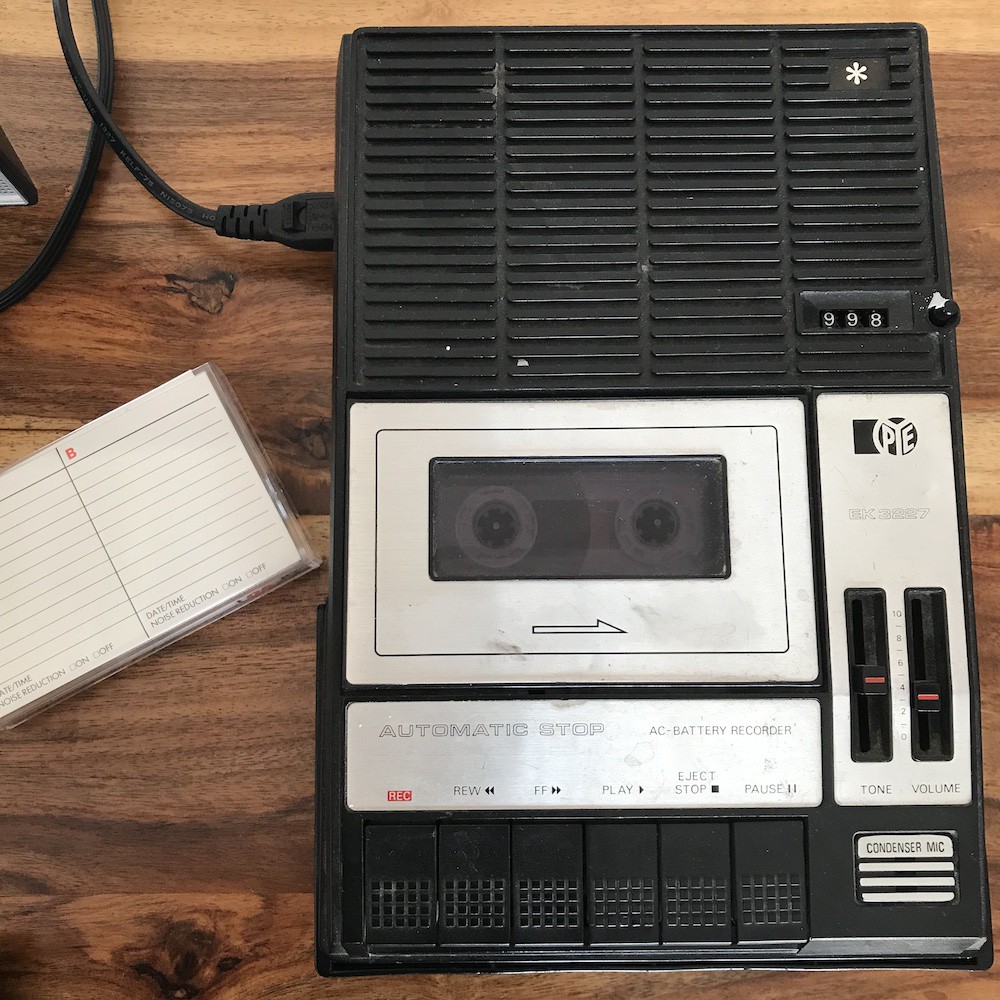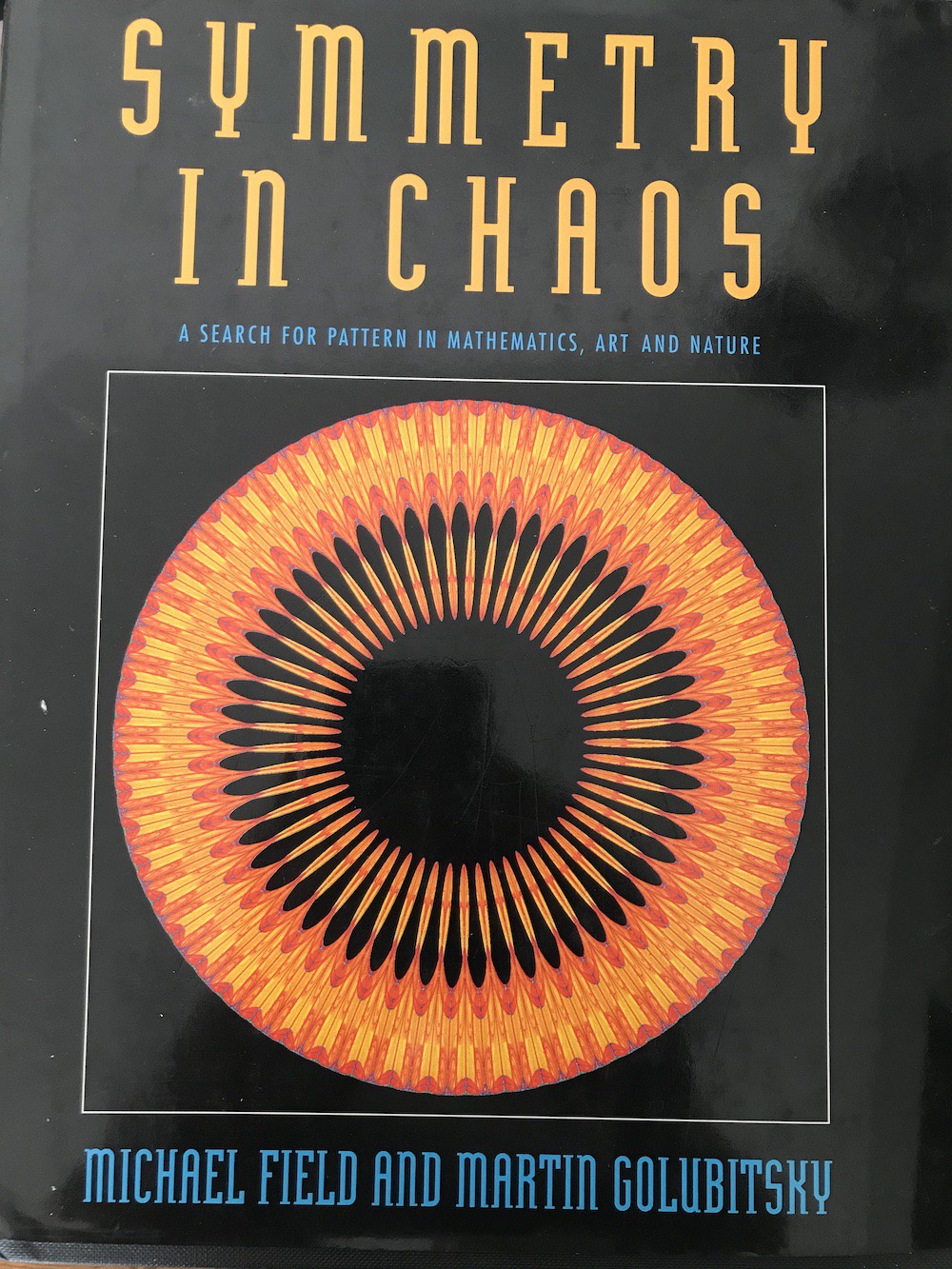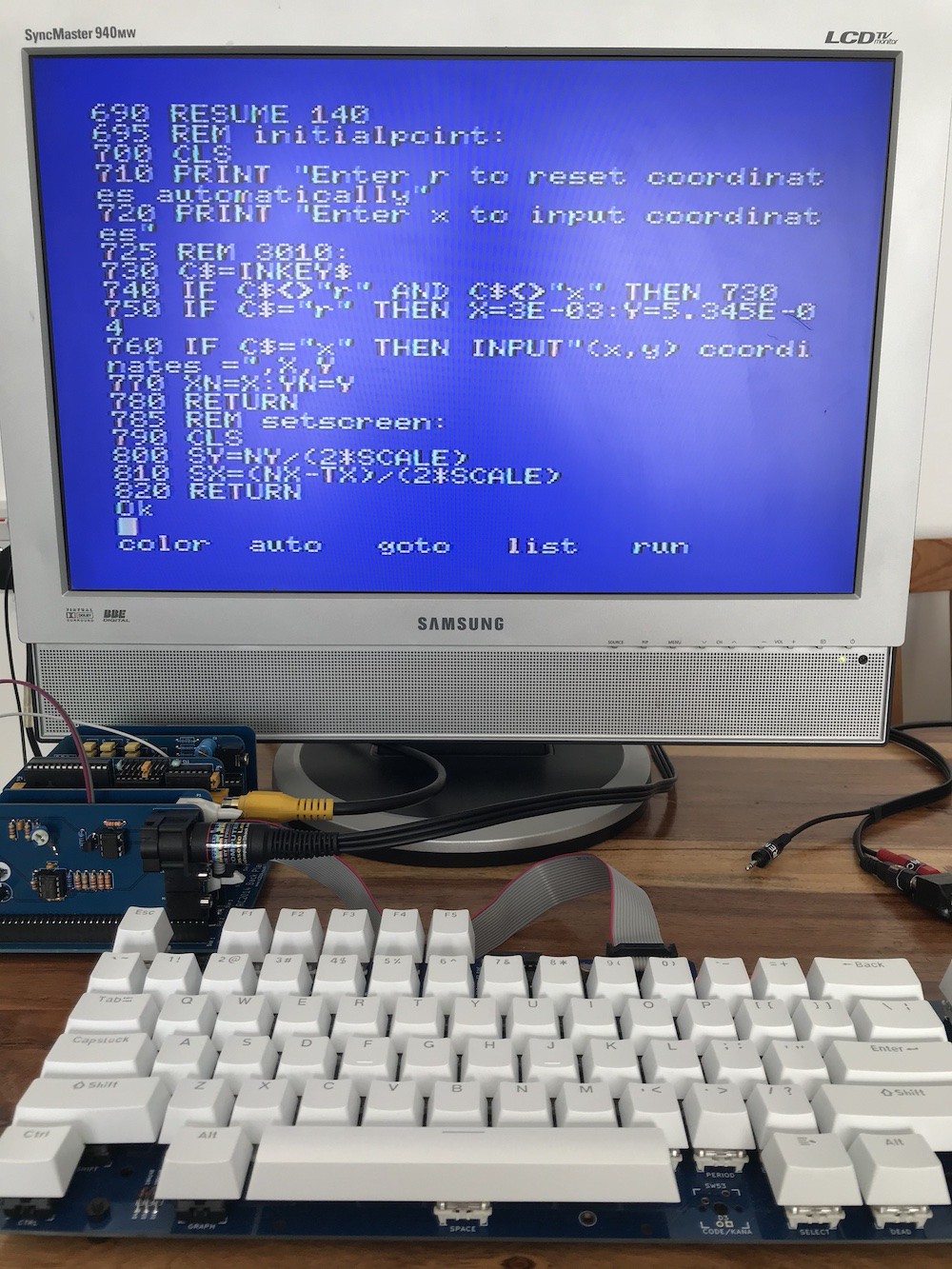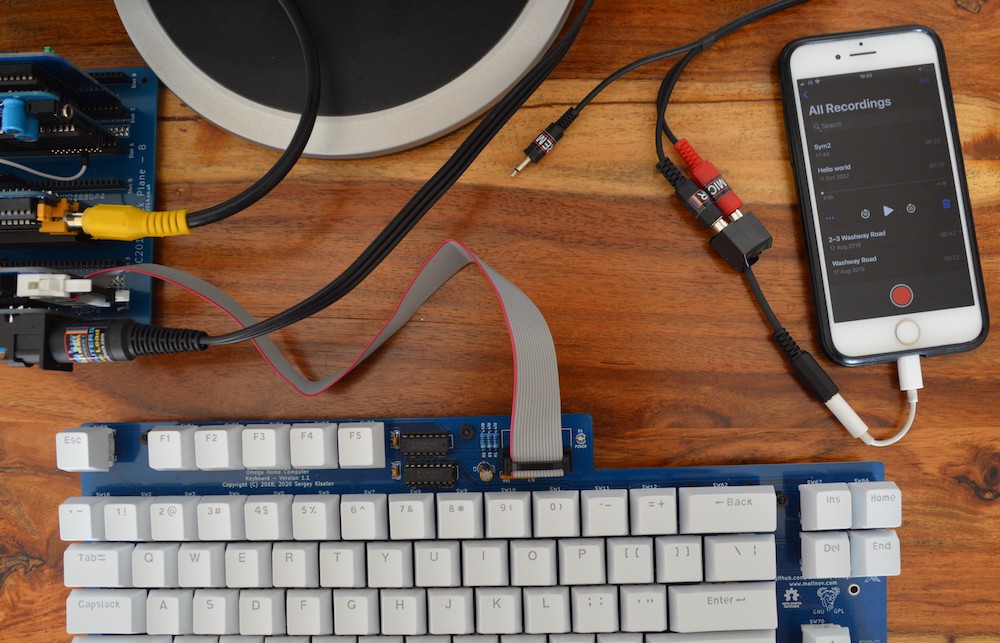In my last log I thought I had a working tape interface. In fact it has taken a little bit more messing about in order to be able to save and load reliably.
I have a couple of tape players. I've had to replace a stretched belt in this one (a car boot sale find) but it now works really well. The record and playback levels seem perfect and the counter works perfectly too (it could still use a clean).

With reliable csaving and cloading, I've been trying some BASIC development of my own plus a type-in from this book:

It's a brilliant book, all about the amazing patterns you can get from a bit of maths and it has some type-ins at the end. These are written in QuickBASIC and I assumed they'd need a lot of translation but I'm amazed to discover that they can almost be typed in directly (with the addition of line numbers and taking care of variables that start with the same first two characters). I'm only just getting familiar with MSX basic but some of the unfamiliar commands in these programs such as DEFDBL, PSET, PRINT USING and more are all present in MSX basic.
Having said that, the program doesn't run properly and I've got some debugging to do. I'm also not expecting this to produce a pattern as impressive as the ones in the book, but we'll see.

Alternatives to tape
Having said that saving to real tape is working reliably now (which is good because the type-in program above is the best part of 100 lines) I've been thinking about better storage solutions. I will investigate MSX floppy interfaces with a view to hooking up a Gotek. In the mean time, I've been thinking about developing a microcontroller-based solution that can sample and play back the signals.
That's become unnecessary since I've tried this and found it to work:

I had to make a 4-pole trrs to 2 x mono jack adaptor, which was very easy and I'll publish instructions for that. (Don't judge my work, I used parts that I had to hand.) I've also had to tweak my interface design a little (technical detail - in order for my phone to detect the presence of a 'microphone' on the lightning connector and use that as an input rather than its own mic, the resistance between the mic and ground connections has to be more than a couple of hundred ohms, I discovered).
You'll also see that I now have my MSX tape lead (8-pin DIN to mic, ear and rem) thanks to Retro Computer Shack who make fantastic leads.
With all that in place (and with the volume turned well up, which prompts some warnings from the phone's system about the health of your hearing) it works really well. Another important note (as much a reminder for me as to inform anyone else trying this) is that it's important to switch the quality setting for your memo app from 'compressed' to 'lossless'. (Compression will diddle with your nice clean recording and produce artefacts which mess up the data.)
It's brilliant being able to:
- trim any blank space off the start and end of your recordings
- name them
- scroll through your recordings and access them with a tap
- see the save date and time
Obviously we're still saving and loading at tape speed* and have lost the 'rem' functionality (casette motor switch - I'm managing fine without it so far) but I'm thinking that I might even prefer this to a floppy emulator.
* I haven't yet tried the double-speed 2400 baud that the MSX offers yet, but I will.
Discussions
Become a Hackaday.io Member
Create an account to leave a comment. Already have an account? Log In.